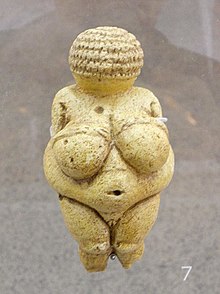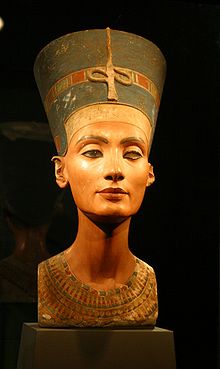
Gender includes the social, psychological, cultural and behavioral aspects of being a man, woman, or other gender identity. Depending on the context, this may include sex-based social structures and gender expression. Most cultures use a gender binary, in which gender is divided into two categories, and people are considered part of one or the other ; those who are outside these groups may fall under the umbrella term non-binary. Some societies have specific genders besides "man" and "woman", such as the hijras of South Asia; these are often referred to as third genders. Most scholars agree that gender is a central characteristic for social organization.

Matriarchy is a social system in which positions of dominance and authority are primarily held by women. In a broader sense it can also extend to moral authority, social privilege, and control of property. While those definitions apply in general English, definitions specific to anthropology and feminism differ in some respects. Most anthropologists hold that there are no known societies that are unambiguously matriarchal.
Post-processual archaeology, which is sometimes alternatively referred to as the interpretative archaeologies by its adherents, is a movement in archaeological theory that emphasizes the subjectivity of archaeological interpretations. Despite having a vague series of similarities, post-processualism consists of "very diverse strands of thought coalesced into a loose cluster of traditions". Within the post-processualist movement, a wide variety of theoretical viewpoints have been embraced, including structuralism and Neo-Marxism, as have a variety of different archaeological techniques, such as phenomenology.
Androcentrism is the practice, conscious or otherwise, of placing a masculine point of view at the center of one's world view, culture, and history, thereby culturally marginalizing femininity. The related adjective is androcentric, while the practice of placing the feminine point of view at the center is gynocentric.
Feminist theory is the extension of feminism into theoretical, fictional, or philosophical discourse. It aims to understand the nature of gender inequality. It examines women's and men's social roles, experiences, interests, chores, and feminist politics in a variety of fields, such as anthropology and sociology, communication, media studies, psychoanalysis, political theory, home economics, literature, education, and philosophy.
Feminist archaeology employs a feminist perspective in interpreting past societies. It often focuses on gender, but also considers gender in tandem with other factors, such as sexuality, race, or class. Feminist archaeology has critiqued the uncritical application of modern, Western norms and values to past societies. It is additionally concerned with increasing the representation of women in the discipline of archaeology, and reducing androcentric bias within the field.
Archaeological theory refers to the various intellectual frameworks through which archaeologists interpret archaeological data. Archaeological theory functions as the application of philosophy of science to archaeology, and is occasionally referred to as philosophy of archaeology. There is no one singular theory of archaeology, but many, with different archaeologists believing that information should be interpreted in different ways. Throughout the history of the discipline, various trends of support for certain archaeological theories have emerged, peaked, and in some cases died out. Different archaeological theories differ on what the goals of the discipline are and how they can be achieved.
Male privilege is the system of advantages or rights that are available to men on the basis of their sex. A man's access to these benefits may vary depending on how closely they match their society's ideal masculine norm.
Margaret W. Conkey is an American archaeologist and academic, who specializes in the Magdalenian period of the Upper Paleolithic in the French Pyrénées. Her research focuses on cave art produced during this period. Conkey is noted as one of the first archaeologists to explore the issues of gender and feminist perspectives in archaeology and in past human societies, using feminist theory to reinterpret images and objects from the Paleolithic Era or the late Ice Age. She is Professor Emerita of Anthropology at the University of California, Berkeley. She was named by Discover magazine in their 2002 article, "The 50 Most Important Women in Science".
Feminist anthropology is a four-field approach to anthropology that seeks to transform research findings, anthropological hiring practices, and the scholarly production of knowledge, using insights from feminist theory. Simultaneously, feminist anthropology challenges essentialist feminist theories developed in Europe and America. While feminists practiced cultural anthropology since its inception, it was not until the 1970s that feminist anthropology was formally recognized as a subdiscipline of anthropology. Since then, it has developed its own subsection of the American Anthropological Association – the Association for Feminist Anthropology – and its own publication, Feminist Anthropology. Their former journal Voices is now defunct.
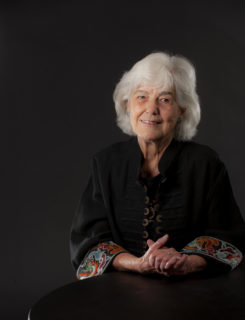
Sarah Milledge Nelson was an American archaeologist and Distinguished Professor Emerita from the Department of Anthropology, University of Denver, United States.

Ruth Tringham is an anthropologist, focusing on the archaeology of Neolithic Europe and southwest Asia. She is a Professor of the Graduate School (Anthropology) at the University of California, Berkeley and Creative Director and President of the Center for Digital Archaeology (CoDA), a recently established non-profit organization. Before going to Berkeley, she taught at Harvard University and University College London. Tringham is probably best known for her work at Selevac (1976–1979) and Opovo (1983–1989), Serbia, at the Eneolithic tell settlement of Podgoritsa, Bulgaria (1995), and at the well-known site of Çatalhöyük (1997-), Turkey.
Patriarchy is a social system in which positions of dominance and privilege are held by men. The term patriarchy is used both in anthropology to describe a family or clan controlled by the father or eldest male or group of males, and in feminist theory to describe a broader social structure in which men as a group dominate women and children.
Gender essentialism is a theory which attributes distinct, intrinsic qualities to women and men. Based in essentialism, it holds that there are certain universal, innate, biologically based features of gender that are at the root of many of the group differences observed in the behavior of men and women. In Western civilization, it is suggested in writings going back to ancient Greece. With the advent of Christianity, the earlier Greek model was expressed in theological discussions as the doctrine that there are two distinct sexes, male and female, created by God, and that individuals are immutably one or the other. This view remained largely unchanged until the middle of the 19th century. This changed the locus of the origin of the essential differences from religion to biology, in Sandra Bem's words, "from God's grand creation [to] its scientific equivalent: evolution's grand creation," but the belief in an immutable origin had not changed.
Feminist political theory is an area of philosophy that focuses on understanding and critiquing the way political philosophy is usually construed and on articulating how political theory might be reconstructed in a way that advances feminist concerns. Feminist political theory combines aspects of both feminist theory and political theory in order to take a feminist approach to traditional questions within political philosophy.
"The Matter of Seggri" is a science fiction novelette by American writer Ursula K. Le Guin. It was first published in 1994 in the third issue of Crank!, a science fiction – fantasy anthology, and has since been printed in number of other publications. In 2002, it was published in Le Guin's collection of short stories The Birthday of the World: and Other Stories. "The Matter of Seggri" won the Otherwise Award in 1994 for exploring "gender-bending" and has been nominated for other honors including the Nebula Award.
The principle of male as norm holds that language referring to females, such as the suffix -ess, the use of man to mean "human", and other such devices, strengthens the perceptions that the male category is the norm and that the corresponding female category is a derivation and thus less important. The idea was first clearly expressed by 19th-century thinkers who began deconstructing the English language to expose the products and footings of patriarchy.
Feminist biology is an approach to biology that is concerned with the influence of gender values, the removal of gender bias, and the understanding of the overall role of social values in biological research and practices. Feminist biology was founded by, among others, Ruth Bleier of the University of Wisconsin-Madison. It aims to enhance biology by incorporating feminist critique in matters varying from the mechanisms of cell biology and sex selection to the assessment of the meaning of words such as "gender" and "sex". Overall, the field is broadly defined and pertains itself to philosophies behind both biological and feminist practice. These considerations make feminist biology debatable and conflictive with itself, particularly when concerning matters of biological determinism, whereby descriptive sex terms of male and female are intrinsically confining, or extreme postmodernism, whereby the body is viewed more as a social construct. Despite opinions ranging from determinist to postmodernist, however, biologists, feminists, and feminist biologists of varying labels alike have made claims to the utility of applying feminist ideology to biological practice and procedure.
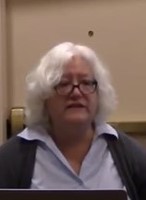
Rosemary A. Joyce is an American anthropologist and social archaeologist who has specialized in research in Honduras. They were able to archeologically confirm that chocolate was a byproduct of fermenting beer. She is also an expert in evaluating the archaeological records of society and the implications that sexuality and gender play in culture.
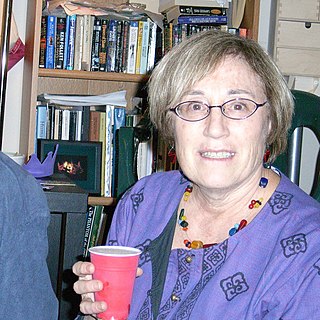
Joan Margaret Gero was an American archaeologist and pioneer of feminist archaeology. Her research focused on gender and power issues in prehistory, particularly in the Andean regions of Argentina and Peru.
